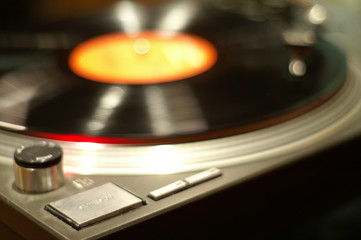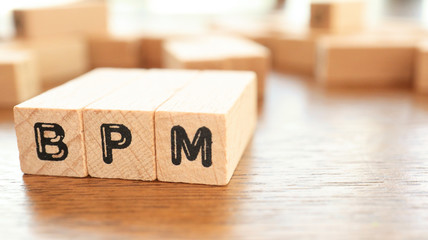Tapping Tempo is a great tool for songwriters, DJs, people wanting to check their heartbeats, and anyone else who needs to match a tempo to a number.
The term "beats per minute test" or BPM test is self-explanatory: It shows the number of beats in one minute. If the tempo is written as 60 BPM, a beat sounds exactly once every second. A tempo of 120 BPM is twice as fast, with two beats per second.
What is Tap Tempo

Tap BPM tempo is used to determine the beats per minute of a song. To find out the true bpm, tap the spacebar (or any other key) for a few seconds. Depending on how quickly you tap, your recorded tempo will match that speed.
Whether you're trying to learn a song, developing a set, or playing live with a drummer, knowing the BPM is crucial. Alternatively, the BPM Counter estimates the tempo range and the average bpm based on the tempo range. With this method, you get a very accurate and correct tempo.
In case you were wondering, "tap tempo" can also refer to a feature on guitar pedals. With a guitar pedal, you can tap beats out by using your foot. Sync the tempo of effect pedals, reverbs, flashback delays, or modulation footswitches to a song's bpm. This is the secret to a good rhythm. Essentially, it's the same as tapping your finger on the tool.
When it comes to tap tempo guitar pedals, however, the application is generally for on-the-fly, live performance. As an example, drummers can alter their playing speed live. Thus, tapping, tapping, tapping your way back to the perfect time is very helpful. It's also sometimes necessary to change tempos within a much more complex composition.
What BPM Counter

An audio BPM Counter analyses the beats per minute (bpm) of incoming audio. It searches for transients, also known as impulses, in the input signal. During the attack portion of the signal, transients are very fast, nonperiodic sound events. The more obvious this impulse is, the easier it is for BPM Counter to identify the tempo.
Drums and rhythm instruments, such as basslines, lend themselves to tempo analysis, whereas pads are not suitable candidates.
Beats Per Minute
What does 'beats per minute' BPM mean exactly?
BPM is a term frequently used in electronic music. In particular, dance music, where a song's tempo is crucial to determining its genre, vibe, matching, and so on.
Obviously, beats per minute play an important role in music. Likewise, a gabber hardcore record under 150 bpm would probably cease to be classified as gabber altogether.
A song's tempo or pace is determined by its number of beats. A song with more beats per minute will be faster and more upbeat. A slower song has fewer beats per minute. Thus, it's pretty clear that slow songs can happen, and fast songs can be sad. It is only the beginning of the journey in establishing a song's overall mood.
-
Which genre has which BPM?
A song's style is determined by not only the sounds and rhythms but also the tempo. Based on your experiences as a listener, you probably have some idea about the genre of a song when you hear it. The following are "typical" BPM ranges for some popular music styles:
- Dub: 60-90 bpm
- Hip-hop: 60-100 bpm
- House: 115-130 bpm
- Techno/trance: 120-140 bpm
- Dubstep: 135-145 bpm
- Drum and bass: 160-180 bpm
Of course, hip-hop music does not always have to be between 60 and 100 BPM. These are only guiding values.
In addition to measuring beats per minute, BPM can be used to count heartbeats. By tapping along with your pulse for a few seconds, you can count out the number. You can also count for 15 seconds or even a whole minute if you want to get more accurate. A resting heart rate between 60 and 100 beats per minute is considered normal.
Despite this, there are people who fall outside this range who are also perfectly fine. It is always best to consult a physician if in doubt.
If you want to get really creative, you can also use the BPM test tool to match the bpm of your workout playlist with your heartbeat.
Metronome
You can use this tool to set your metronome to a tempo that is accurate for a song you are trying to learn, play along with, or riff on. You can even emulate or disassemble for creative purposes.
Metronomes and click tracks count beats per minute at a regulated pulse. It gives you notational information about where the notes go, according to the beats per minute (tempo) and time signature. This tool is included with every digital audio workstation (or DAW).
When a song has a 4/4 time signature, there are four quarter notes per measure. There are also odd time signatures, such as 5/4, which has five quarters per measure, and 7/8, which has seven-eights per measure.
The most common time signatures are probably 4/4, 3/4, and 2/4.By discovering the signature of your favorite songs, you can learn about the rhythms you enjoy. Introduce new time signatures to your work as a songwriter to break out of old habits and find new ideas and ways to structure melody and rhythm.
Lastly
Free online tool Tap BPM calculates tempo and counts Beats Per Minute (BPM) by tapping any key to the beat or rhythm. You can calculate BPM quickly by tapping for a few seconds. Optionally, you can set the unit to Beats Per Second (BPS) or Beats Per Hour (BPH).
Manually counting the meters of your music is tedious. Musicians and dancers can use this BPM tapping counter to check the tempo of the id3 tag of an mp3 file when working in iTunes.
In medical situations, the BPM tapper can also quickly calculate Heartbeats Per Minute, heart rate, or the resting pulse.

